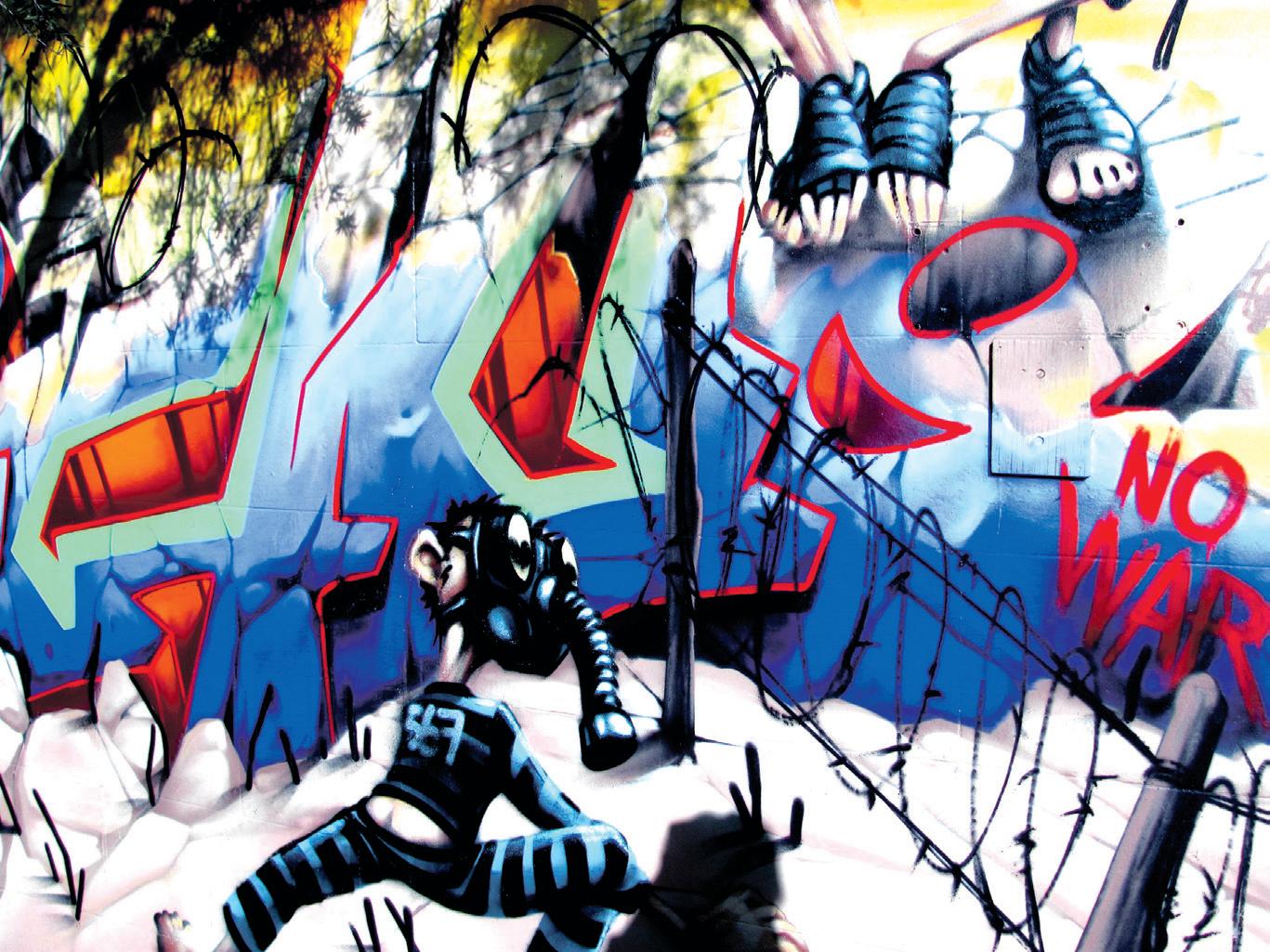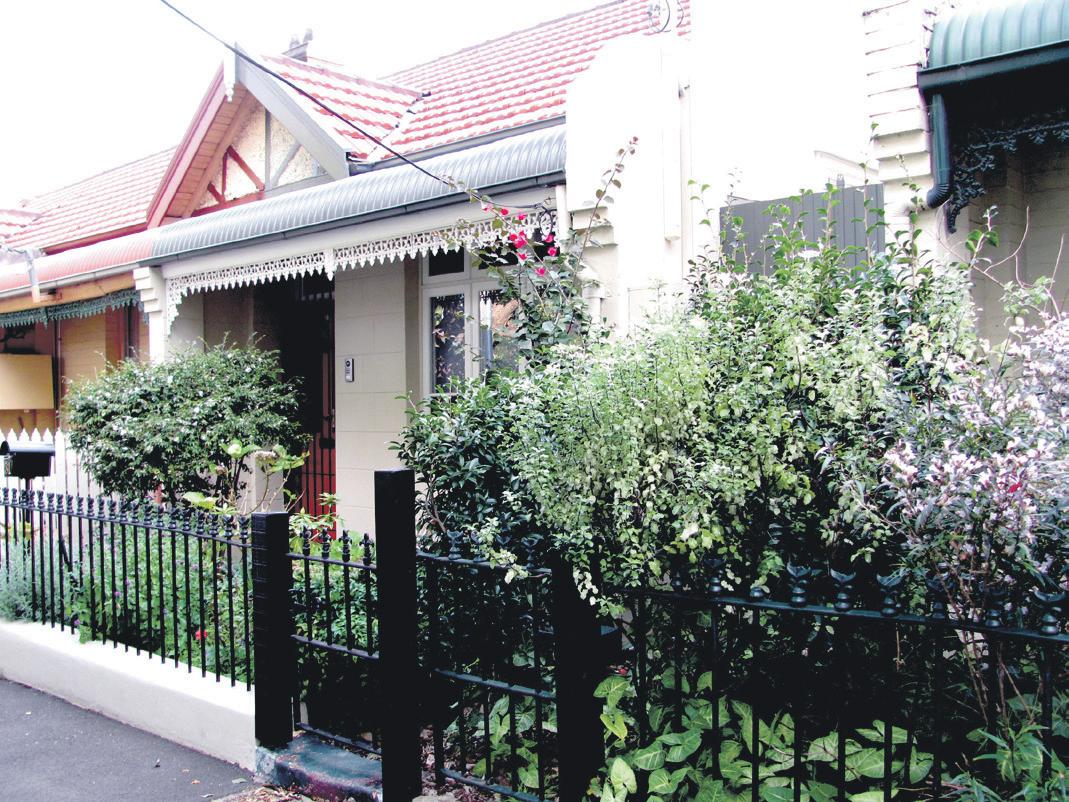
3 minute read
Funkytown
from 2012-10 Sydney (1)
by Indian Link
There’s something special about Newtown and Sydney’s inner west, and its quirky, community-friendly residents

BY PETRA O’NEILL
Darl, it has taken a lifetime!” exclaimed the Newtown local sunning herself on her front porch with a purring cat on her lap and the most eclectic collection of garden gnomes, brightly painted birds and flowers decorating her small garden and house. A little eccentric, but herein lies the charm of Sydney’s inner west. Its long term residents, many who were born here and stayed, and the sense of community they have created, makes it a welcoming place for the more recent arrivals of trendy professionals, many of whom work at universities or hospitals nearby, and students who choose to call it home.
Cities are composite parts that collectively form a whole of neighbourhoods and suburbs and while each has its own distinctive mix, it is perhaps more pronounced here.
Alongside Central Railway Station is the small suburb of Chippendale that is undergoing a massive transformation, with the renowned American architect Frank Gehry’s new building for the University of Technology, as well as several high-rise apartments under construction. With cranes looming overhead, here you will also find the White Rabbit Gallery, displaying one of the world’s largest collections of contemporary Chinese Art, and the fabulous chutneys, jams and relishes available from Silver Spoon Caterers. The street names Vine, Ivy, Myrtle and Pine are reminders that the area once served as a nursery after botanist Thomas Shepherd was granted a land grant by Governor Darling in 1827, on condition that he grow plants.
Crossing over to busy Cleveland Street off Abercrombie Street is the Block, the subject of large protests that began in the 1970s, when aboriginal campaigners lobbied the Federal government for a grant to purchase the terraces to provide low-cost housing for aboriginal people.
The small suburb of Darlington, made up of small terraces has been subsumed in a large part by the ever-expanding Sydney University campus. The Everleigh Market on Wilson Street is a great place for organic fruit and vegetables, fresh bread and an array of stallholders with long lines as testimony to their great food.
I can’t say how many times I have walked along the busy retail precinct of King Street, Newtown for great vintage/retro clothing, bookstores, boutique bakeries, cafes and restaurants at moderate prices. From Israeli to Mexican, Czech, Indian, African, Thai, Italian and Turkish, every multicultural palate is catered for.
But wander off the main streets and you will discover the hidden treasures of Newtown and Erskineville tucked down narrow streets where you will find long queues to get the best espresso coffee, at Barmuda, Vargabar, Campos, Cafe Shenkin or the


Travel Notebook Newtown Sydney
GETTING T h ERE
Numerous buses travel along King Street, the main ones being 422,423,426 and 428. Trains are less frequent. Go to trip planner at www.131500.com.au Tel: 131-500. Parking is at a premium on weekends.
W h ERE To G o
White Rabbit Gallery, 30 Balfour Street, Chippendale www.whiterabbitcollection.org Thurs-Sun 10-6
Everleigh Market, 243 Wilson Street, Darlington www.everleighmarket.com.au Farmers Market: Saturdays
8am-1pm, Artisan’s Market First Sunday of the month 10am-3pm.
W h ERE To EAT
There is a tantalising array of dining options lining King Street with a staggering number of Thai Restaurants. The coffee shops are very hip well worth the wait in line.
F u RT h ER INF o RMATI o N
Websites such as Time Out Sydney have listings and reviews of restaurants. Pick up a copy of the Urban Walkabout guide, a neat fold out map available at many of the shops along King Street.
Black Star Pastry for a decadent selection of rich cakes. Renowned for graffiti, you will find this edgy art form down back alleys. With architecture dating back to the late 19th century, it is well worth exploring the surrounding leafy tree lined residential streets with many fine examples of Victorian era terraces. One of the most impressive is the row of grand terraces facing Hollis Park in north Newtown. The smaller terraces found further south reflect its working class status with the Everleigh rail yards and brickworks at St Peters nearby. There are also many imposing churches including St Stephen’s Anglican Church, an example of Victorian Gothic architecture built on land that was part of a land grant given to Governor Bligh in 1806.
King Street was once an Aboriginal track to the Cooks River and Newtown was established as a residential and farming area in the early 19th century, taking its name from a grocery store opened there by John Webster in 1832. The sign above the store read “New Town Stores” and the name was adopted.
It was also home to Mary Reibey the face on the $20 note. In 1792 aged 15, she was sentenced to transportation for stealing a horse and at the time of her arrest was disguised as a boy. After a happy and prosperous marriage and displaying shrewd skills in agriculture and trade, she retired to Newtown building a large villa.
There is a wonderful sense of community in Newtown and surrounds with buskers singing their own compositions, quirky shops, neighbours chatting, children playing and a vibrancy that results from the mix of students, artists, professionals and old timers that call this pocket of Sydney home.
King Street was once an Aboriginal track to the Cooks River and Newtown was established as a residential and farming area in the early 19th century, taking its name from a grocery store opened there by John Webster in 1832. The sign above the store read “New Town Stores” and the name was adopted.














